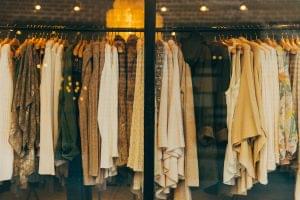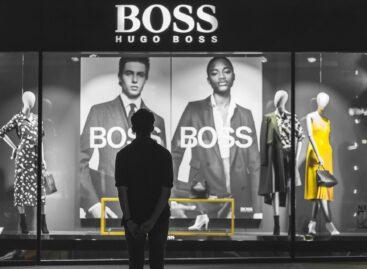Fashion industry: what happens to our clothes before and after we buy them?
Walking through a Budapest mall, we might not even think about how many thousands of clothes are hanging on hangers. It is estimated that there can be up to 50,000 textile products on display in the brand stores of a large shopping center at any given moment, not including accessories and shoes. About 5,000 of these items are sold out every day – the rest are used as visual enticements to encourage purchases. This is the topic of a recent article by mfor.hu.
 But what happens to the clothes that don’t find a buyer? And what alternatives are emerging to the overconsumption of fast fashion?
But what happens to the clothes that don’t find a buyer? And what alternatives are emerging to the overconsumption of fast fashion?
At the bottom of the fashion pyramid: thrift stores, charity shops, garage sales
Shops offering cheaper, second-hand clothing, such as thrift stores and vintage stores, are less popular today than they were ten years ago. During the pandemic, many stores closed, and the remaining ones – especially in Budapest – significantly raised their prices. Thus, even a T-shirt chosen from the kilo system costs almost as much as a new, cheaper item.
Donation shops have emerged as a new trend, offering clothes, coats, evening dresses, and even porcelain cups at really low prices. These offer a sustainable alternative, as they provide existing pieces to new owners. The same goes for girlfriend clothing swaps and garage sales, which also help reduce textile waste.
Mall tricks: illusions and afterlives
Big brands now “rearrange” their stores every two weeks: often the same clothes are moved to another location, or even to another store, so that returning customers feel like they are new. Early-season sales have almost been built into the pricing.
If the pieces still don’t sell, it is typical for the stock to move between stores in the countryside and in the capital. In the end, the surplus ends up in stores in former socialist countries, is donated – or is shipped to Africa. However, it is important to know: the same brand in the West often offers better quality and more current design than here.
Related news
Inditex: Zara group may close 100+ stores worldwide, focus on larger, more techy stores
🎧 Hallgasd a cikket: Lejátszás Szünet Folytatás Leállítás Nyelv: Auto…
Read more >Made by Indira encourages ethical consumption
🎧 Hallgasd a cikket: Lejátszás Szünet Folytatás Leállítás Nyelv: Auto…
Read more >Hugo Boss quarterly revenue falls
🎧 Hallgasd a cikket: Lejátszás Szünet Folytatás Leállítás Nyelv: Auto…
Read more >Related news
New Year’s Eve: shortened opening hours in stores – general store closure on January 1
🎧 Hallgasd a cikket: Lejátszás Szünet Folytatás Leállítás Nyelv: Auto…
Read more >Tejföl is only a name for live flora: new categories for sour dairy products will be introduced from 2026
🎧 Hallgasd a cikket: Lejátszás Szünet Folytatás Leállítás Nyelv: Auto…
Read more >Sausage prices before New Year’s Eve: cheap entry, expensive premium – how big is the gap on the shelves?
🎧 Hallgasd a cikket: Lejátszás Szünet Folytatás Leállítás Nyelv: Auto…
Read more >






